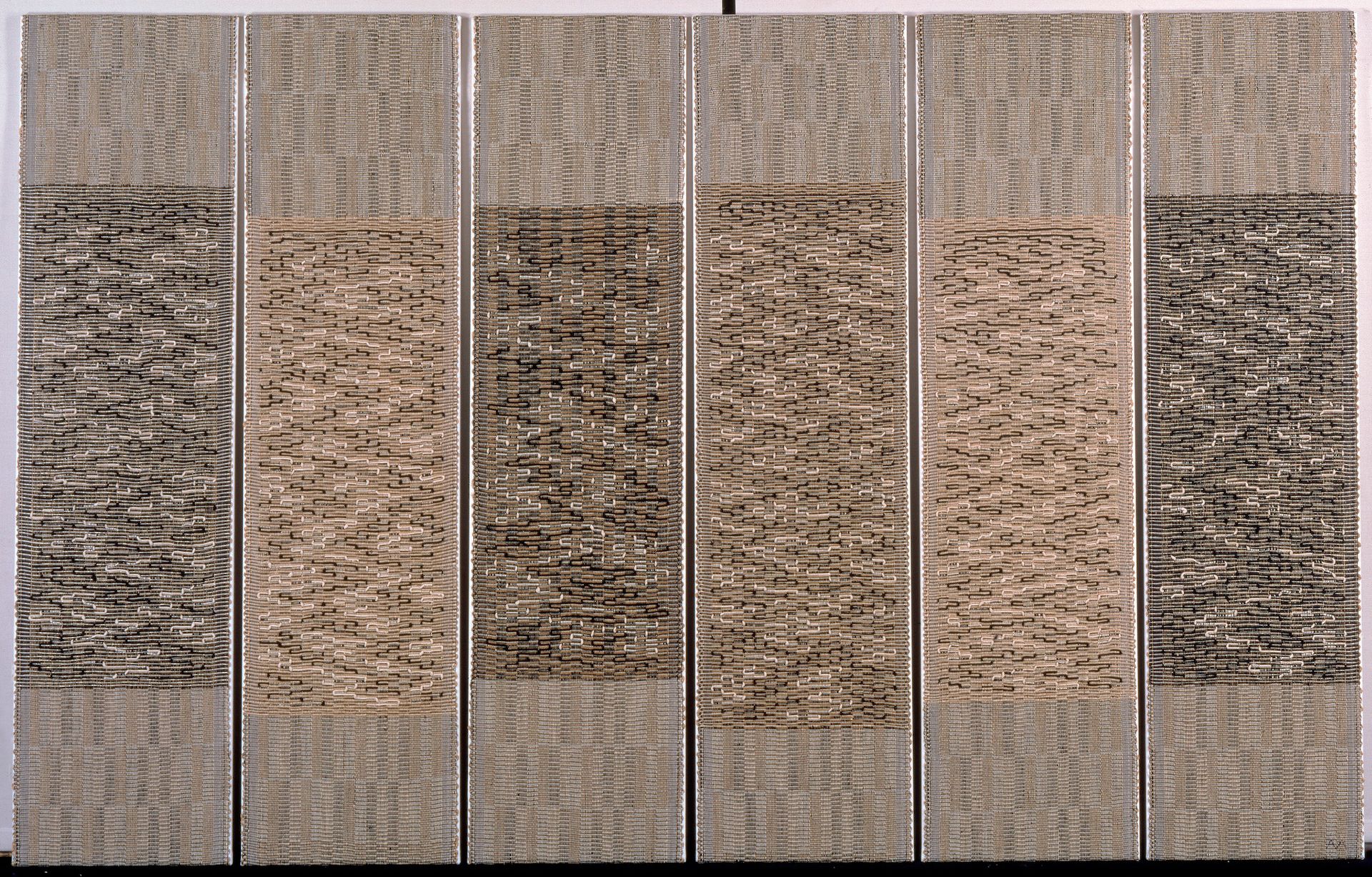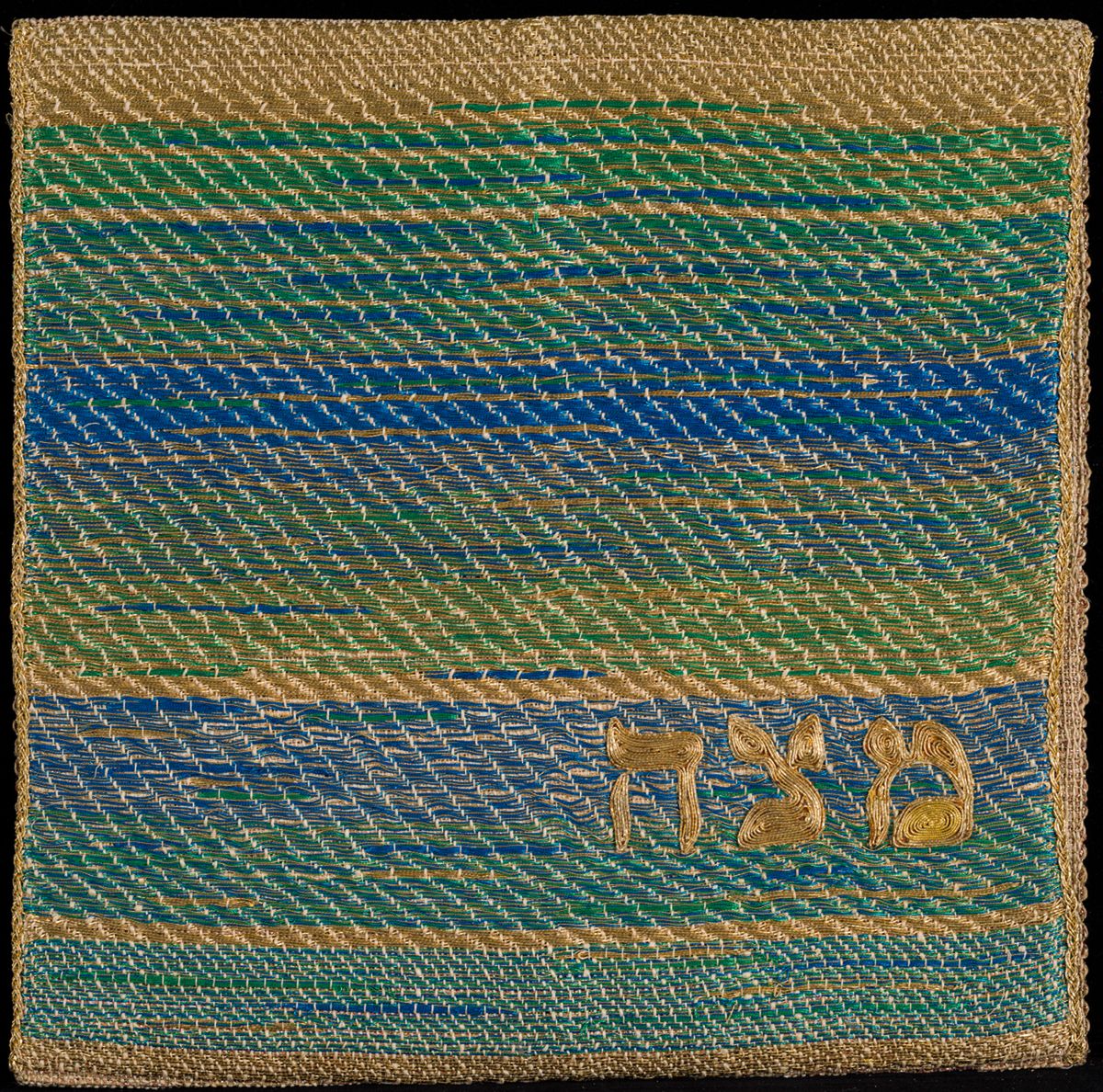Every Passover when the Cohens set their table for the traditional Seder meal, they took out something reserved for their table alone—a matzah cover woven for them by experimental textile artist Anni Albers. “It sat on the table next to my father, or my mother after he died,” says Tamar Cohen, daughter of Elaine Lustig and Arthur Cohen, who gifted the custom-made ritual object to New York’s Jewish Museum in 2021. “The afikoman [a piece of unleavened bread hidden for children to find after the meal] was wrapped inside in a napkin.”
A matzah cover traditionally holds three pieces of unleavened bread at the center of the Passover table and is decorated with organic patterns. But as the abstracted warp and weft of this Albers piece might suggest, things were done a bit differently in the Upper East Side townhouse of Lustig Cohen, a graphic designer and artist, and Cohen, an art critic and theologian. (When the cover wasn’t in use, it sat on the top shelf of a modernist cabinet that Lustig Cohen designed herself.)
Lustig Cohen knew Albers through her former husband, designer Alvin Lustig, who was invited by Josef Albers to teach at Black Mountain College in 1945. They remained friends, and Lustig Cohen commissioned Albers to make a matzah cover in 1959. The result was a blue-green square fusing metallic cellophane with bast fiber—typical of the unexpected combinations of synthetic and organic materials that Albers began making at the Bauhaus school. The word “matzah” is embroidered in gold Hebrew letters.
“Works of Judaica (Jewish ceremonial objects) by Albers are quite rare,” Abigail Rapoport, Judaica curator at the Jewish Museum, says. Albers, who was born into a German Jewish family but identified as secular, also created Torah Ark curtains for Temple Emanu-El in Dallas (1957) and Rhode Island’s Temple B’Nai Israel (1961). “Those are furniture design more than a traveling piece of Judaica that was used, that was touched, that actually had pieces of matzah within it.”
Albers’s matzah cover is also distinctive because its function aligns with her thoughts on textiles, her chosen medium. “If the nature of architecture is the grounded, the fixed, the permanent, then textiles are its very antithesis,” Albers wrote in 1957. “Both are ancient crafts…one for a settled life, the other for a life of wandering, a nomadic life.” The matzah that Albers’s cover was designed to contain symbolizes bread that couldn’t rise because of the rush to flee enslavement in Egypt, and wander on a 40-year nomadic journey towards freedom.

Anni Albers, Six Prayers, 1965-66, cotton, linen, bast and silver thread The Jewish Museum, NY. Gift of the Albert A. List Family. © 2022 The Josef and Anni Albers Foundation / Artists Rights Society (ARS), New York
The Jewish Museum was thrilled to receive this modernist Judaica object not only because it is a rare example of Albers relating to her Jewish heritage, but also because she and Lustig Cohen have historically been part of the museum’s fabric. The Jewish Museum commissioned Albers to make a Holocaust memorial, Six Prayers(1965-66), and mounted a retrospective of her work in 2000. Simultaneously, Lustig Cohen was shaping the graphic institutional identity of the museum in the 1960s by designing exhibition catalogues, brochures and other print materials. Her designs and paintings were celebrated in a 2018-19 solo exhibition at the museum.
“The Jewish Museum was an obvious choice,” says Cohen about the decision to gift her childhood matzah cover to the museum. “I am happy other people finally get to share the joy my family had.”


